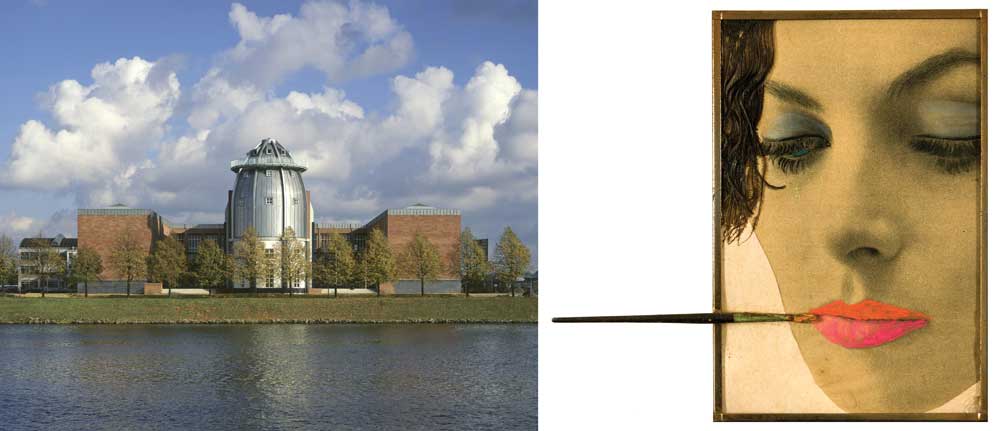Maastricht museums mark 25 years of city’s fair

The Bonnefantenmuseum, where Martial Raysse’s Makeup, 1962 (left), is on show as part of Martin Visser’s collection
The European Fine Art Foundation (Tefaf), organiser of the eponymous fair in Maastricht, is making its presence felt in the Dutch city during its 25th anniversary year with a special commemorative exhibition at the newly renovated Museum aan het Vrijthof. The museum, a historic house in the city’s famous Vrijthof square, will reopen this month following a one-year refurbishment costing almost £6m, with a show devoted to Tefaf, the main sponsors of the restoration project. The exhibition, “25 Years of Tefaf Masterpieces” (14-25 March), is timed to coincide with the fair (16-25 March). “Tefaf has now become the official main sponsor of Museum aan het Vrijthof,” the museum website declares.
Twenty-five Dutch and international galleries that have exhibited every year since Tefaf began in 1988 have each arranged the loan of one work that they have shown at the fair. “The show marks the galleries’ own anniversary with Tefaf,” says Roxanne Doyen, the curator of the exhibition. “We imposed no themes and so have a mixture of art—in that respect it’s become a mini Tefaf.” Highlights include Negro Woman with a Red Hat, 1929, by Jan Sluijters, which is part of the Albricht family collection, loaned by the Kunstgalerij Albricht, and Christ and the Woman Taken in Adultery, 1628, a painting by Pieter Brueghel the Younger (pictured) on loan from the London-based gallery Johnny van Haeften. “Tefaf is only really for art dealers, and many locals do not attend, but this exhibition is to get the public to connect with what the fair has to offer,” Doyen says.
The city’s other major institution, the Bonnefantenmuseum, is also aiming to raise its profile during Tefaf. “I’m interested in exhibiting private collections, which is reflected in our shows during the fair. I want to increase our collaboration with private collectors and help them to open up their collections to the public by, for instance, renovating abandoned factory buildings, which can then be used for exhibitions,” says Stijn Huijts, the newly appointed director.
The Bonnefantenmuseum shows the private collection of the Dutch designer Martin Visser (13 March-17 June), with more than 100 works on loan from the Kröller-Müller Museum, Otterlo. The exhibition consists of 120 works, including paintings and sculptures by 35 artists with whom Visser collaborated, such as Carl Andre and Joseph Beuys. More than 100 letters and postcards on display reflect the close relationships Visser developed with these artists. Organised thematically, the exhibition includes early works created in Visser’s Bergeijk home by Sol LeWitt, such as Buried Cube Containing an Object of Importance but Little Value, 1968, and Anselm Kiefer’s large Hoffmann von Fallersleben on Helgoland, 1978.
Visser’s designs represent a shift in the post-war Dutch design aesthetic, which moved away from dark, heavy furniture towards light, elegant pieces, exemplified in the eight furniture designs on display, including Sofa Bed: BR02, 1958-60. “We are entering a new cultural time in Holland,” says Paula van den Bosch, the show’s curator. “The government is stepping back and we have to rely on private funding, so we turned to private collectors. Visser highlights Holland’s valuable culture.”
Another exhibition at the Bonnefantenmuseum, “The Beauty of Silence: Japanese Prints by Tsukioka Kogyo” (until 8 April), comprises works drawn from the museum’s collection, with around 70 works on paper depicting the popular silent Noh musical dramas, which have been performed in such venues as the Kanze Noh Theatre in Tokyo since the 14th century.
By Belinda Seppings. Museums, Issue 233, March 2012
Source: http://www.theartnewspaper.com